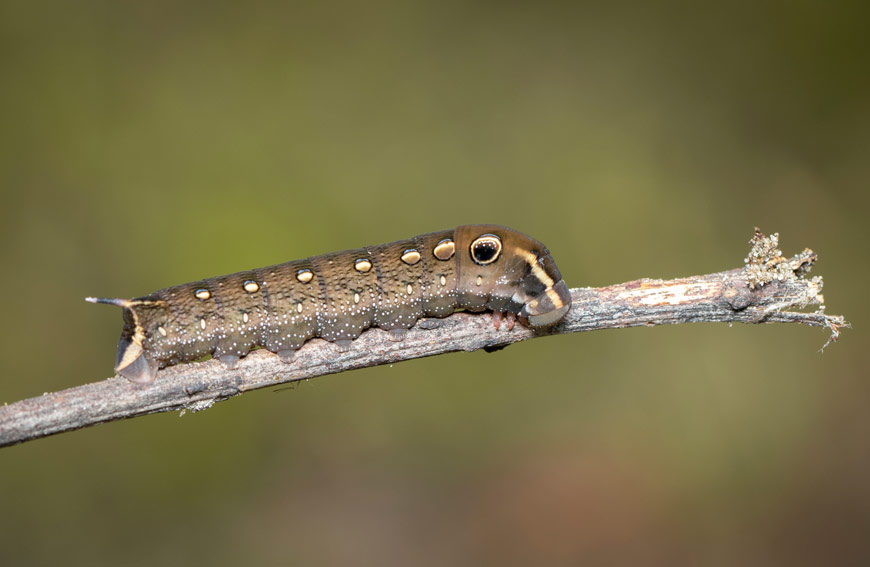There is one thing armyworms are after and that’s your lawn. Even if you can’t hear or see them coming, they have a tendency to invade yards with great numbers. Some years are worse than others and this year could be a bad one. There are even some entomologists that are saying the infestation/invasion has never been this bad or widespread before.
But now the question is; do you know what armyworms are and what they look like? Even though the name suggests they are worms, they really are actually moth caterpillars. Normally contained to the southeast, they are now infiltrating all the way to the west coast and starting to head north.
The reasoning behind the name is because of how it moves across fields like an army storming through land, where they leave nothing but dead grass behind them. We here at Five Star Tree Services are here to help you learn more about these lawn pests and how to protect your lawn from disaster!
What They Are
These fall invaders used to be contained to southern and transition zone states. But now, climate change can be linked to their spreading into other areas with particularly warm climates. Some speculate that a bad stormfront directed them from their typical southern areas and moved them north. This could have been done by the air currents they used once they metamorphosed into moths. Allowing them to drop down in more northern areas, where they have now settled.
Sometimes, their devastation from feeding can look like drought-stressed grass. However, this can turn quickly into a sea of armyworms if they all start feeding on your lawn at the same time. If you have never seen these creatures before, you probably want to know what they look like. The caterpillar larvae are usually 1-1.5 inches long and are dark green/brown or black with long stripes running down their abdomen that are white, orange, and dark brown. When they turn into a moth, they have a tan body and a small white spot in the center of each wing with their bodies being 1-inch long and their wingspan being 1.5-inches long.
The Lifecycle of a Fall Armyworm
When adult armyworms are ready to lay eggs, they prefer flat leaves on trees, flowers, or patio furniture, and even light posts. Every female has the ability to lay upwards of 500 eggs in a mass. In only 5-7 days, these eggs will hatch. Once this happens, they begin their onslaught of eating their way across your lawn.
Armyworm Signs
Once these little critters begin their feeding frenzy, they can chew your grass down to the ground, leaving behind nothing but brown patches. If you think your lawn’s brown patches were created by armyworms, you can inspect individual blades of grass for ragged holes left behind. Another thing to look for when you suspect armyworms is a lacy or transparent look to your grass from them chewing on them. Armyworms especially like new sod and newly seeded grass.
How To Rid Your Lawn of Armyworms
The first thing to do if you suspect these fall armyworms are invading is to look for the sticky masses of eggs being laid on things like patio sets, buildings, plants, décor, and any other surfaces outdoors. If you find these in time, before they hatch, you can get ahead of the curve and exterminate them, avoiding their destruction. If they have already hatched and are munching on your lawn already, you can apply a pyrethrin-based insecticide to kill them. Liquid applications are preferred over granular because the liquid works faster at stopping these pests.
Does The Grass Grow Back?
After a speed-eating feeding frenzy that has left your lawn damaged and destroyed looking, you are probably wondering if it will grow back on its own or not. Thankfully, fall armyworms typically only eat the upper parts of the grass, leaving the roots intact, which allows them to recover on their own as if you mowed the lawn too short. Even though your yard has probably sustained significant damage, it will come back as long as the crowns of the plant have remained intact and protected. You can also help it along with supplemental irrigation.
Are Armyworms Toxic to Animals?
One thing about armyworms is that they don’t like dry areas, they like to eat tender, juicy grass, which is why they are constantly moving. If you have them in your yard and also have any pets, like dogs or cats, that you let outside, rest assured that armyworms are not known to be toxic and shouldn’t hurt your animals if they touch or eat one.
Does Rain Affect Armyworms?
You would think that heavy rain might be able to kill armyworms by browning them but unfortunately, the opposite occurs. These large rain falls can actually bring the invasions wherever they go, not kill them.
How five Star Tree Services Can Help
Armyworms bring a wake of destruction to any and all lawns they come across. If you are experiencing this invasion, you should contact us here at Five Star Tree Services to help you remove these pesky pests from your yard once and for all! Give us a call at (416) 990-3355 and ask about our tree care services in Richmond Hill.


